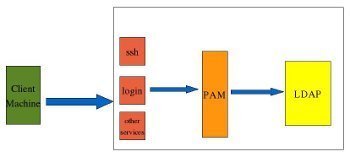Pluggable Authentication Modules
A Pluggable Authentication Module, or PAM, is a software implementation that allows administrators to significantly change how users log into a server by running a PAM on the server itself. PAMs are used to provide authentication of users as well as perform any tasks that are associated with initializing or terminating the session, such as logging a user into the server, displaying a personalized webpage, and logging the user out of the server when he/she is finished.
How Pluggable Authentication Modules Work
PAMs can be embedded into existing servers to account for all users that have access to the server. The PAM will keep a list of all usernames/email addresses and their associated passwords in order to verify the permissions of a user who is attempting to access the server. When the user has successfully logged in, the PAM will find and display any personalized webpages such as a user profile or account summary or may simply forward the user back to the homepage and allow him/her to choose where to go from there. For more information concerning PAMs, visit this link.
Applications
PAMs are used by many different types of servers to provide authentication of users. For example, online stores often use PAMs to recognize a user and display personal information to the user, such as his/her recent purchases, currently saved products, or recommendations of other products based on what the user has purchased in the past. PAMs are also frequently used by financial institutions for many of the same applications as well as company-related servers for employee-specific data.



Comments - No Responses to “Pluggable Authentication Modules”
Sorry but comments are closed at this time.